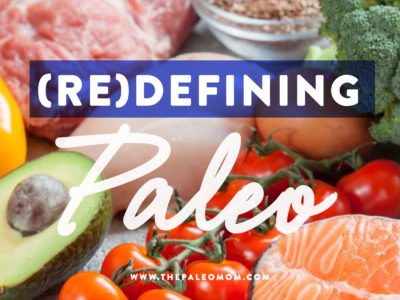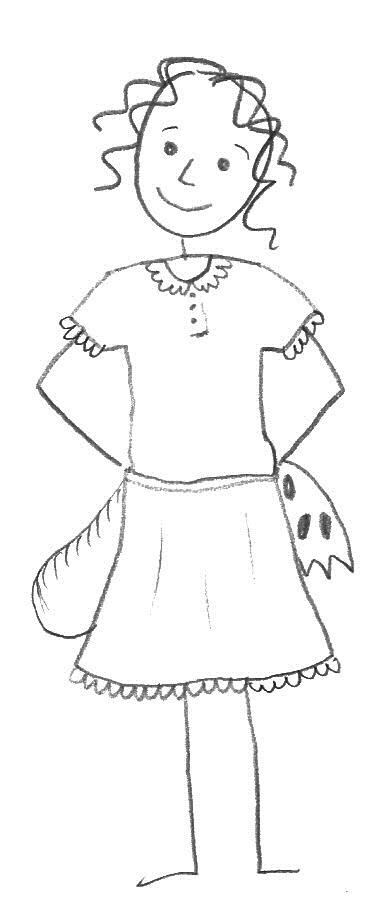When someone asks you “what is a Paleo diet”, what do you say? The classic tag line is something like “Paleo is eating the way our bodies evolved to eat for optimum health”. As I mentioned in Tuesday’s post, I am not a big fan of couching Paleo in this way. That’s because archeological evidence for this diet is not the proof but instead it forms the basis of the hypothesis. The real data supporting a Paleo Diet is in the thousands of nutritional, biological, and medical sciences peer-reviewed journal articles that each evaluate one tiny aspect of this way of eating. The scientific evidence will only get stronger as more and more clinical trials utilizing a Paleo diet are performed (like the ones that Dr. Terry Wahls is performing for the treatment of MS). As we continue to learn more about how food affects our health, we also continue to review and modify the basic principles of a Paleo diet (no grains, no legumes, no dairy, no preservatives, no refined sugars, no processed oils, and balancing omega-3 to omega-6 fats). There are foods that we include in our diets now that we may find out later are suboptimal. There are foods that we exclude in our diets that we may find out later are very healthy for us. We are finally trying to define an optimal diet based on scientific studies of the mechanisms of how food affects health. We are not simply recreating history.
So, I’ve been practicing my 30-second definition of Paleo for when I get asked in the line-up to pick up my grass-fed meat, or when I find myself chatting about it with the dental hygienist (in between having my mouth filled with cleaning equipment, of course). I want to find a way to define Paleo that doesn’t rely on someone understanding (or believing in) evolution. I want to find a way to define Paleo that focuses on what we do eat and not the many things that are restricted. I want to entice people to learn more, rather than making them think I’m some crazy meat-eating vegan (yes, I realize that analogy makes no sense, but I’m sticking with it). I also want to find a way to explain what Paleo is for you to take back to your family and friends to help them understand it. This is what I’ve come up with (so far):
“A Paleo Diet is a whole foods diet based on what the most current, high-quality nutrition and biomedical research suggests in the best way to eat for optimum health.”
If they let me keep talking, I may follow with this sentence:
“We eat only the most nutritionally-dense and sustainable foods while avoiding any foods that promote inflammation, cause hormone imbalances, and have been conclusively linked to chronic disease.”
I always hope that they will ask what I eat first, since I like to focus on the great foods that I do eat rather than all the things I don’t. But I find most people will ask me what I don’t eat first. I still try and frame it positively:
“We don’t eat the foods that scientific research has shown to be linked to chronic health problems like cardiovascular disease and diabetes. So, we only eat whole, unprocessed foods with no added sugars. We are very mindful of eating high quality protein sources and good fats that help control inflammation. And, we don’t eat foods that cause inflammation or irritate the lining of the digestive tract like grains (especially those containing gluten), legumes or dairy products.”
This is typically met with an aghast “What DO you eat?” question, which I actually like much more. I try and sound enthusiastic as I reply:
“We eat all kinds of meat, fish, seafood, eggs, tons of vegetables and fruit and some nuts and seeds. Lots of variety and as much quality locally-produced food as possible. This is actually based on scientific research looking at the commonalities in diet between all the healthiest and longest-living cultures in the world. Historically-studied cultures that eat this way tend to live a very long time and don’t have any of the chronic illnesses that are so rampant today like cardiovascular disease, diabetes and even cancer.”
Sometimes I get the question “Do you eat low-carb?”.
“Well, less carbs than the typical Western diet, but whether or not you eat low-carb on a Paleo diet is an individual choice. Some people like to eat low-carb to help lose weight faster, but in general, carbohydrates are not restricted.”
Sometimes I get the question “Is this the caveman diet?”.
Nutrivore Weekly Serving Matrix
An easy-to-use and flexible weekly checklist
to help you maximize nutrient-density.
The Weekly Serving Matrix is very helpful! I’ve been eating along these lines but this really helps me know where to focus vs. which foods serve a more secondary role. It’s super helpful and has taken a lot of worry out of my meal planning. Thanks!
Jan
“Yes, some people call this the caveman diet. It’s also called the Paleolithic Diet, Ancestral Diet, Primal Diet and Perfect Health Diet. Most people use the name Paleo Diet because much of the original research done to support this way of eating was performed with an evolutionary biology perspective. But the real science that supports this diet is the thousands of studies that evaluate the effects of specific foods on our health. There is still alot to be studied, but there is enough convincing evidence for me to want to eat like this for the rest of my life. Plus, I am so much healthier, happier, and energetic since I started eating a Paleo Diet! I highly recommend trying it for a month and seeing how you feel!”
Some people will take this information away and let it percolate for days, weeks, or years before they feel the need to investigate further. Others will be so fascinated that we launch into discussions on environmental sustainability, specific health conditions that can be helped with a Paleo diet, and even the mechanisms through which certain foods promote a leaky gut and inflammation (and sometimes they just ask me how to make Paleo bread). If they are interested, I point the person to some of the wonderful resources for more information (like my blog! Boy, I really should keep some business cards in my purse). I typically recommend The Paleo Answer for people who I can sense want to get into the nitty gritty details of the diet, with scientific citations (that’s what converted my aunt and uncle). Practical Paleo is my favorite general guide and also comes with recipes to help get people started. I love to recommend The Paleo Solution
for its emphasis not only on diet but on sleep quality, stress management and exercise. It Starts With Food
is a great resource for people who would do better with a cold turkey approach or who are likely to get bogged down in the science (Dallas and Melissa explain the rationale behind the Paleo diet in a very approachable way, in my opinion). I may also recommend the The Primal Blueprint
or Perfect Health Diet
for those who I sense may identify better with their explanations and versions of this way of eating and with the inclusion of high-quality dairy and rice, respectively. I also recommend the books The Vegetarian Myth
and The Omnivore’s Dilemma
and the documentaries Food, Inc.
, Fresh
, and Ingredients
to help with the environmental sustainability arguments. I like to recommend the movie Fat Head
just for the explanation of the effects of too much sugars and carbohydrates in our diet and also to help people begin to think of dietary fat as healthy.
I think a very small percentage of the people I talk to about the Paleo diet are really ready to try it for themselves. And I never try to push this way of eating on anyone (I believe the motivation to make positive diet and lifestyle changes need to come from within and no amount of encouragement or education or even scare tactics from external sources can make someone change until they are ready). But, I try and frame my explanation in the most approachable way possible. Maybe if they aren’t ready now, they will remember my explanation and come back to this way of eating when they are ready for a change. I feel that if we are to make the Paleo diet truly accessible to the majority of people, we need to find a way of explaining it so that anyone can understand and identify with it.











